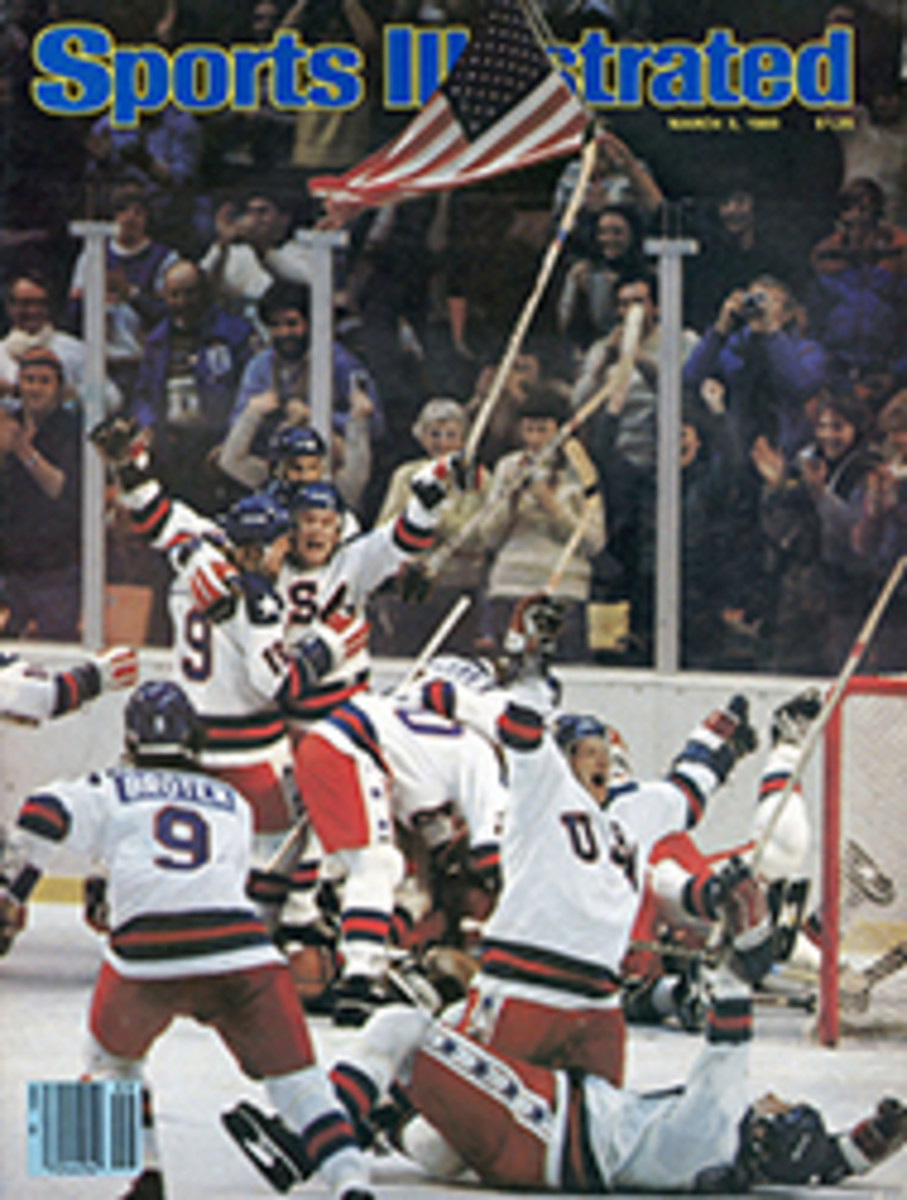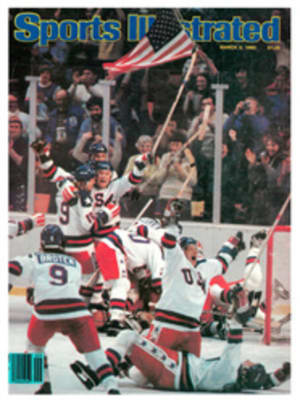
Hi, do you remember me?
For Brian Oldfield it was a momentous occasion. After 3½ years of forced, frustrating exile from track and field, he was once again standing in a shotput circle facing world-class throwers in a major competition. The scene was last Saturday night's San Francisco Examiner Games in the Cow Palace, where Oldfield became the latest of several once-banished International Track Association pros to begin a comeback as an amateur. With the crowd of 10,100 hushed in expectation, Oldfield launched himself into his unique, 540-degree, discus-style spin—the maneuver that helped make him the world's best shotputter in the mid-'70s—and let loose his first throw. The ball looped out and then nose-dived into the floor two inches short of the line closest to the shot circle, the 60-foot marker. It was, at best, an embarrassing moment. Asked about it later, Oldfield just shook his head. "That throw is a mystery to rile," he said. "My mind must have been elsewhere."
Where else, one wonders, could Old-field's mind have been at such a time? Certainly the caliber of his rivals at the Cow Palace merited his full attention. The six-man field included Dave Laut, the No. 1-ranked American in 1979; Al Feuerbach, the world's reigning amateur when Oldfield was becoming king of the pros; and Michael Carter, an SMU freshman who holds the high school record and is generally considered America's shotputter of the future. Carter was a sixth-grader when Oldfield last took part in a top-flight meet against amateurs.
Perhaps as he steadied himself for that first throw, Oldfield's mind was racing back through the years. He had been a late bloomer in the shot, already 27 when he upset Randy Matson for the third spot on the 1972 Olympic team while simultaneously horrifying USOC officials with his bikini briefs and fishnet tank tops and his habit of puffing cigarettes around the ring. He finished sixth in Munich and then joined the ITA as one of its lesser lights when the professional circuit started up in 1973.
Oldfield's throwing did not begin to really attract attention until he switched to the discus style. In the spring of 1975, after a couple of years of working on his new technique, he had a world indoor best of 72'6½" at the Cow Palace. Then, outdoors at El Paso, he threw an astounding 75 feet even. Neither mark has ever been surpassed. Nor is either recognized as a world record, because Oldfield was a pro.
But with those throws Oldfield became the ITA's first homegrown superstar, delighting crowds with his antics as well as his distance with the shot—after his 72-footer in the Cow Palace he ran down the range and kissed the spot where the ball had landed. At 6'5" and 280 pounds, he regularly raced, and beat, the ITA's women sprinters at 30 yards. When he wasn't competing, he talked up a storm, making statements like "When God invented man, He wanted him to look like me," or "On my baddest days I'm better than anyone else." After turning 30, in 1975, Oldfield announced, "I'll be around for another 10 years at $50,000 per. And I can make that much again in endorsements and such, and that's a million." At least the math was right.
But perhaps as Oldfield went into that first spin last Saturday night, he was looking ahead instead of backward. To Oldfield the future has always looked rosy. That attitude often amazes his friends, who had viewed his prospects of ever competing again as decidedly dismal for most of the past four years. When the ITA went belly up in 1976, Oldfield, who had pocketed about $23,000 as a pro, found himself, along with about 75 other athletes, shut out of the only game left in town, amateur track and field. Most accepted their exile as permanent and went in search of other careers. Oldfield did not. He continued to train for the shot, a decision that recently prompted Marty Liquori to ask him, "Why are you martyring yourself?"
Eventually Oldfield's obstinancy was rewarded. Last November the International Amateur Athletic Federation, track and field's governing body, issued an unexpected ruling that freed American ITA pros to compete in so-called domestic meets—meets in the U.S. that do not include foreigners, except those affiliated with U.S. colleges or clubs. In early March the IAAF will consider allowing the ITA pros to compete in international meets, as well. Almost everyone expects the IAAF to shoot down this proposal, but Oldfield, predictably, remains optimistic.
Although last Saturday's meet was Oldfield's first major competition, since the IAAF's November ruling he had entered several local all-comers meets and also had taken part in an "exhibition" following an international meet in Houston's Astrodome two weeks ago. In an all-comers meet on Jan. 6 in Los Gatos, Calif., Oldfield put the shot 70'4½", the first 70-footer by an American since 1977, when Terry Albritton performed the feat. Oldfield says his legs are stronger than ever but feels that his upper-body strength may be off by as much as 30%. He now weighs a dainty 255 and estimates it will take about three months to bulk up. "My technique, not heavy weightlifting, is what I've been working on these years," he says.
And then again, perhaps it was "these years," the years between the good old days and the good times that he insists lie ahead, that weighed on Oldfield's mind when he let go of that first put at the Examiner Games. Those were years when he went, to use his own words, "from being a caviar athlete to a bumpkin." They were hard years, even for a man with Oldfield's obsession. "The shotput is a security blanket for me," he says. "To be able to throw has always been enough for me. Everything else—like making a living—is extra."
Not that Oldfield hasn't taken a few stabs at the latter. Shortly after the ITA folded he invested in a furniture store. That experience resulted in his learning how bankruptcy proceedings work. He got involved with a restaurant-discotheque in a P.R. capacity. "I liked that," he says. "I was eating lobster and steak, drinking Pouilly-Fuissè, driving a big car. Everything was comp." But the restaurant went under, too. Oldfield then got a real-estate license because, he says, "I wanted to find out how to invest my money in property so I'd have a reason to have a cash flow." For two months he worked at a health spa. "Basically, I ended up lifting weights," he says. "I didn't belong in sales or service." During one 20-month stretch he lived free in a 2½-bedroom apartment in return for serving as the playing coach of the building-managing company's touch-football team.
The result of this life-style becomes obvious in an audit of Oldfield's material possessions. He will be 35 in June, but he has never owned a house. The car he drives is the discard of a friend. Oldfield had to sell his own car last year when he ran out of money. As for credit cards: "I'm in limbo on them, but the statute of limitations is about to run out. Let's just say I'm glad there's no debtors' prison." Yet he survives from week to week. He now has a part in a movie, for which he has grown a beard, and is being housed by the studio during the filming.
Oldfield's track friends, if no one else, understand this hand-to-mouth existence. "Brian's really no different than the rest of us," says Maren Seidler, America's top woman shotputter. "It's just that he hasn't been able to compete. For the last couple of years I've always been referred to as an 'Olympic hopeful.' Now, because of a decision by Jimmy Carter, I don't have that tag anymore. Now I'm just a track bum, too. I feel for Brian. It's been agonizing to see him with no outlet for performing. Sometimes I wanted to cry for him, but I never pitied him, because I never felt he wanted to do anything else."
Oldfield acknowledges the truth of Seidler's observations. "I feel as if I'm an artist," he says. "When I spin, I have something to say about my life-style. I feel I can contribute something to the world in the shotput. I'll never contribute anything to the world in any other sphere." But with an eye toward amateur track's relaxed rules concerning endorsements, he admits that he wouldn't mind making some money along the way. "I'll be able to reap as an amateur the benefits I turned pro to get," he says. "I'm bound and determined to prove you can make a living at the shot. How can you be the best in the world at something and not make money at it?"
Whatever it was that caused Oldfield's mind to wander on his first throw last Saturday, it didn't distract him for long. His fourth throw carried 65'10" and ultimately earned him third place, only 14 inches behind Laut's winning toss of 67 feet. Feuerbach edged Oldfield by two inches for second. Except for that horrendous opening, Oldfield seemed pleased with his performance. And, yes, the years of waiting had been worth it. "I guess I'm just an other-worlder," he said. "I just want to compete and travel. I want to get back into the track and field world."
Once again Oldfield's mind wandered, and then quickly he spoke his thoughts. "I fit there," he said. "I don't fit in the real-estate business."
PHOTO

